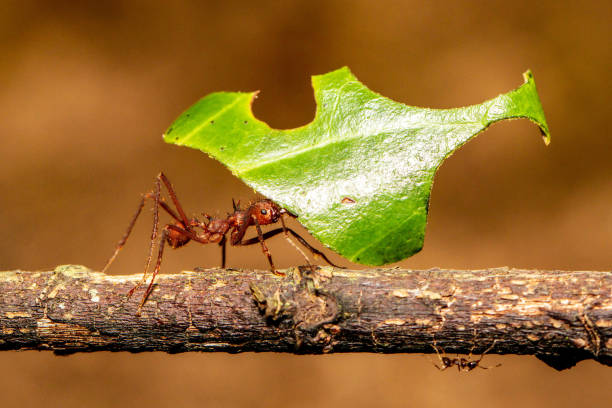The Intriguing World of Leafcutter Ants: A Close Look at Nature's Farmers
Leafcutter ants have long fascinated scientists and nature enthusiasts alike with their advanced social structure and farming abilities. This article delves into the world of these insects, offering a fresh perspective on their unique lifestyle. Leafcutter ants, belonging to the genus Atta, are widely recognized for their distinctive trait of cutting leaves, flowers, and grasses and using them to cultivate a fungus that serves as their primary food source. These ants are found predominantly in South and Central America, and their historical presence dates back millions of years. They have been an intriguing subject of many scientific studies due to their complex social organization, agricultural skills, and their impact on the ecosystem.

The Fascinating Lifestyle of Leafcutter Ants
Leafcutter ants are often referred to as Earth’s first farmers, with their agricultural practices predating human farming by millions of years. Each colony, which can include millions of ants, operates like a well-organized factory. Worker ants venture out to cut leaves from plants, which are then taken back to the colony. Here, smaller workers chew these leaves into a pulpy mass which is used to cultivate a particular type of fungus, the ants’ primary food source. The worker ants are diligent in maintaining the health of this fungus, including using antibiotics produced by bacteria on their bodies to combat harmful molds.
Current Research and Findings
Recent studies on leafcutter ants have shed light on their complex social structure. The colonies display a clear division of labor, with different ants performing specific tasks based on their size and age. The largest ants, known as soldiers, protect the colony, while the medium-sized ants are the foragers. The smallest ants maintain the fungal garden and care for the ant larvae.
In terms of their impact on the environment, leafcutter ants play a significant role in nutrient cycling. By cutting leaves, they stimulate new plant growth, and their discarded fungus contributes to soil fertility. However, their leaf-cutting can also be destructive, damaging crops and impacting forestry operations.
The Economic Impact of Leafcutter Ants
Leafcutter ants are a double-edged sword when it comes to their economic impact. On one hand, their role in nutrient cycling can benefit agricultural practices. On the other hand, they can cause significant damage to crops, particularly in regions where their population is high. In some South American regions, it’s estimated that these ants can defoliate more foliage than all the herbivorous mammals combined. Managing their population without causing ecological imbalance is an ongoing challenge.
Understanding the Leafcutter Ants’ Agricultural Techniques
The farming techniques of leafcutter ants are a marvel of nature. By nurturing a single type of fungus and keeping it free from pests and diseases, these ants have developed a sustainable agricultural system that humans can learn from. Their use of natural antibiotics to keep the fungus healthy is particularly intriguing and can potentially inspire new approaches to pest management in human agriculture.
In conclusion, leafcutter ants offer a fascinating glimpse into a complex world of insect agriculture, social organization, and symbiosis. As we continue to study these insects, we can expect to uncover more insights that bolster our appreciation for the intricacies of nature and potentially inform our own agricultural practices.





